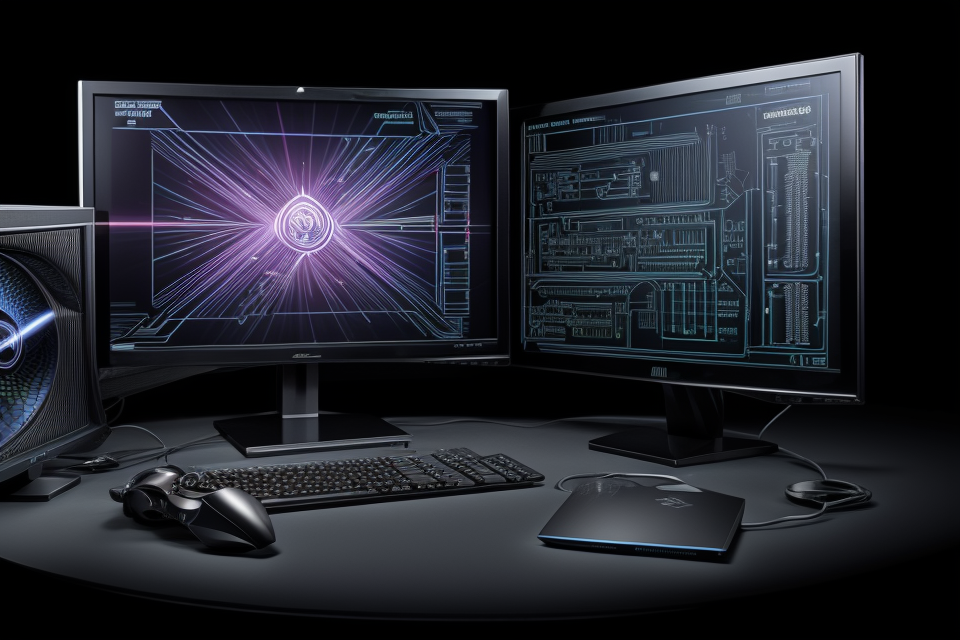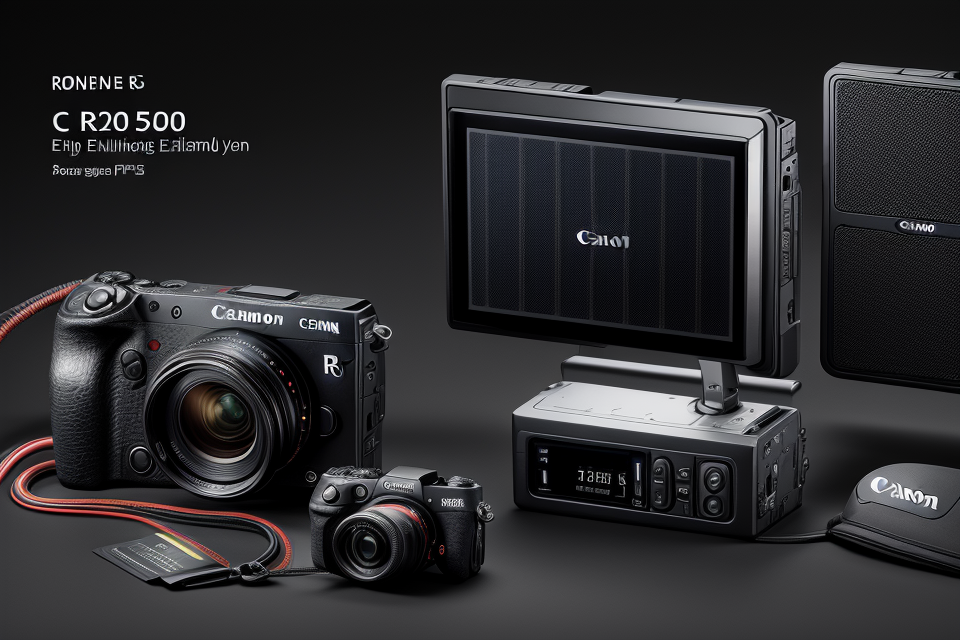
Gamers around the world are always on the lookout for ways to enhance their gaming experience. One of the most critical components in gaming is the graphics processing unit (GPU). The GPU is responsible for rendering images and videos, making it an essential component for gamers who want a seamless and immersive gaming experience. An entry-level GPU is a graphics card that offers decent performance at an affordable price. It is designed for casual gamers who do not require high-end graphics performance. In this article, we will explore what an entry-level GPU is, how it impacts your gaming experience, and why it is an excellent option for casual gamers.
An entry-level GPU, or graphics processing unit, is a basic type of video card that is designed for basic gaming and other graphics-intensive applications. These GPUs are typically less powerful than higher-end models, but they can still provide a decent gaming experience for casual gamers or those on a budget. The impact of an entry-level GPU on your gaming experience will depend on the specific model and its capabilities, but in general, you can expect smoother framerates and improved graphics quality compared to using the integrated graphics on your CPU. However, you may experience some limitations in terms of the games you can play and the settings you can use, especially if you have a high-end gaming PC or monitor.
Understanding Graphics Cards
What is a graphics card?
A graphics card, also known as a display or video card, is a hardware component that is responsible for rendering images and videos on a computer screen. It is an essential component for gamers, as it provides the processing power needed to render complex graphics and animations in real-time.
There are two types of graphics cards: integrated and dedicated. Integrated graphics cards are built into the motherboard and share system memory, while dedicated graphics cards are separate components that have their own memory and processing power. Dedicated graphics cards are typically more powerful and provide better performance for gaming and other graphics-intensive applications.
In the context of gaming, a dedicated graphics card is essential for providing a smooth and seamless gaming experience. Without a dedicated graphics card, the CPU would have to handle all the graphics processing, which would result in slower frame rates and lower quality graphics. For this reason, gamers often invest in high-end graphics cards to ensure the best possible gaming experience.
Types of graphics cards
Graphics cards, also known as display adapters or video cards, are devices that are responsible for rendering images and videos on a computer screen. They are an essential component of a computer system, particularly for gaming, as they help to produce high-quality visuals and smooth gameplay.
There are three main types of graphics cards: high-end, mid-range, and entry-level. Each type of graphics card has its own set of characteristics and capabilities, which can impact the overall gaming experience.
High-end graphics cards
High-end graphics cards are designed for gamers who demand the highest levels of performance and graphics quality. These graphics cards typically have the most advanced features and technologies, such as high memory capacity, fast clock speeds, and multiple GPUs. They are capable of handling the most demanding games and applications, and can produce stunning visuals with smooth frame rates.
High-end graphics cards are typically expensive and require a powerful computer system to fully utilize their capabilities. They are often used by professional gamers, game developers, and enthusiasts who demand the best possible gaming experience.
Mid-range graphics cards
Mid-range graphics cards are designed for gamers who want a balance between performance and affordability. These graphics cards offer good graphics quality and performance, but may not have the advanced features of high-end graphics cards. They are typically more affordable than high-end graphics cards, but still require a moderately powerful computer system to perform well.
Mid-range graphics cards are a popular choice for casual gamers and those who want to play the latest games but do not have a high budget. They can handle most games at medium to high settings, but may struggle with the most demanding games or applications.
Entry-level graphics cards
Entry-level graphics cards are designed for gamers who have a limited budget or do not require high levels of graphics performance. These graphics cards have basic features and capabilities, and are typically less expensive than high-end or mid-range graphics cards. They may have lower memory capacity, slower clock speeds, and fewer GPUs than other types of graphics cards.
Entry-level graphics cards are suitable for casual gamers who do not require high levels of graphics quality or performance. They can handle basic games and applications, but may not be able to handle the latest games or demanding applications.
Overall, the type of graphics card a gamer chooses can have a significant impact on their gaming experience. High-end graphics cards offer the best performance and graphics quality, but are also the most expensive. Mid-range graphics cards offer a balance of performance and affordability, while entry-level graphics cards are the most affordable but may not offer the best performance or graphics quality.
What is an Entry-Level GPU?
Definition of an entry-level GPU
An entry-level GPU is a type of graphics processing unit (GPU) that is designed for basic graphics rendering and is typically less powerful than high-end or mid-range GPUs. These GPUs are typically used in lower-end gaming systems or for casual gaming, and are often found in laptops, low-end desktops, and all-in-one computers.
One of the key characteristics of an entry-level GPU is its limited performance compared to more powerful GPUs. This means that it may not be able to handle demanding games or high resolutions, and may struggle with certain graphics effects or settings. However, for casual gamers or those on a budget, an entry-level GPU can still provide a decent gaming experience.
When compared to high-end and mid-range GPUs, entry-level GPUs are typically less powerful and have fewer features. High-end GPUs are designed for demanding games and applications, and are typically more expensive. Mid-range GPUs offer a balance of performance and affordability, and are suitable for both casual and serious gamers.
Overall, an entry-level GPU is a good option for those who are looking for a basic gaming experience and are on a budget. While it may not be able to handle the most demanding games or graphics settings, it can still provide a decent gaming experience for casual gamers or those who are just starting out.
Examples of entry-level GPUs
- Popular Brands and Models
- NVIDIA: GTX 1660 Super, GTX 1650, GTX 1630
- AMD: Radeon RX 5500 XT, Radeon RX 580, Radeon RX 570
- Budget-Friendly Options
- NVIDIA: GTX 1650 Super, GTX 1660, GTX 1630 Super
- AMD: Radeon RX 560, Radeon RX 5700, Radeon RX 550
Entry-level GPUs are graphics processing units designed for basic gaming experiences, offering reasonable performance at an affordable price. These GPUs are ideal for gamers who prioritize cost-effectiveness without sacrificing too much gaming quality. Here are some popular and budget-friendly entry-level GPUs available in the market:
Popular Brands and Models
NVIDIA and AMD are the two major players in the GPU market, offering a range of entry-level GPUs. Some of the popular models from these brands include:
- NVIDIA:
- GTX 1660 Super: This GPU model offers a good balance of performance and affordability, making it a popular choice for entry-level gaming.
- GTX 1650: A more budget-friendly option from NVIDIA, the GTX 1650 provides decent gaming performance for casual gamers.
- GTX 1630: A newer addition to NVIDIA’s entry-level lineup, the GTX 1630 is an excellent choice for those looking for a low-cost GPU that still delivers good gaming performance.
- AMD:
- Radeon RX 5500 XT: This AMD GPU model offers good performance at an affordable price, making it a popular choice for budget-conscious gamers.
- Radeon RX 580: The Radeon RX 580 is a well-rounded GPU that provides solid gaming performance and is suitable for both entry-level and mid-range gaming setups.
- Radeon RX 570: A more budget-friendly option from AMD, the Radeon RX 570 is an excellent choice for those looking to save on costs without compromising too much on gaming performance.
Budget-Friendly Options
In addition to the popular models, there are several budget-friendly entry-level GPUs available in the market. These options provide even more affordable alternatives for gamers on a tight budget:
+ GTX 1650 Super: A slightly upgraded version of the GTX 1650, the GTX 1650 Super offers improved performance at a slightly higher price.
+ GTX 1660: A more affordable option from NVIDIA, the GTX 1660 provides decent gaming performance for casual gamers on a budget.
+ GTX 1630 Super: A newer and more powerful version of the GTX 1630, the GTX 1630 Super offers improved performance at a slightly higher price.
+ Radeon RX 560: A budget-friendly option from AMD, the Radeon RX 560 offers decent gaming performance at an affordable price.
+ Radeon RX 5700: This AMD GPU model provides a good balance of performance and affordability, making it a popular choice for budget-conscious gamers.
+ Radeon RX 550: The most budget-friendly option from AMD, the Radeon RX 550 is an excellent choice for those looking for a low-cost GPU that still delivers
How Does an Entry-Level GPU Impact Your Gaming Experience?
Gaming performance
When it comes to gaming performance, an entry-level GPU can have a significant impact on your gaming experience. Here are some of the key factors to consider:
Frame rates and smoothness of gameplay
One of the most important factors in any gaming experience is the frame rate, which refers to the number of frames that are rendered per second. The higher the frame rate, the smoother the gameplay will be. An entry-level GPU may not be able to produce the same level of frame rates as a high-end GPU, but it can still deliver a smooth gaming experience, especially if you’re playing games that don’t require a lot of graphics processing power.
In addition to frame rate, the smoothness of gameplay is also important. This refers to how well the game runs and how well the graphics are rendered. An entry-level GPU may not be able to produce the same level of graphics as a high-end GPU, but it can still deliver a smooth gaming experience, especially if you’re playing games that don’t require a lot of graphics processing power.
Compatibility with different games
Another important factor to consider when it comes to gaming performance is compatibility with different games. Some games may require a certain level of graphics processing power or a specific type of GPU in order to run properly. An entry-level GPU may not be compatible with all games, but it can still provide a good gaming experience for many popular games.
It’s worth noting that some games may not perform as well on an entry-level GPU as they would on a high-end GPU, but this can vary depending on the specific game and the hardware configuration. If you’re a serious gamer, you may want to consider investing in a high-end GPU to ensure the best possible gaming experience. However, for casual gamers or those on a budget, an entry-level GPU can still provide a good gaming experience and allow you to enjoy many popular games.
Visual quality
- Display resolution and refresh rate
An entry-level GPU may have limited capabilities when it comes to handling high display resolutions and high refresh rates. This can result in lower image quality and less smooth gameplay, particularly in fast-paced games or those with visually demanding graphics. - Graphics settings and visual effects
Entry-level GPUs may also struggle to handle high graphics settings and complex visual effects in games. This can lead to a decrease in overall visual quality, including lower texture detail, reduced anti-aliasing, and decreased shadow and lighting effects.
It’s important to note that the impact of an entry-level GPU on visual quality can vary depending on the specific GPU model and the gaming system as a whole. Additionally, other factors such as the display monitor and the game’s own graphics settings can also play a role in determining the final visual quality of a game.
Upgradability
An entry-level GPU, while not as powerful as high-end models, still has the potential for future upgrades. This means that if you opt for an entry-level GPU now, you may be able to upgrade it later on to improve your gaming experience. However, there are limitations to consider.
Firstly, upgrading an entry-level GPU may not yield significant improvements in performance. This is because entry-level GPUs are typically designed to meet the basic requirements of games, but may not be able to handle more demanding titles or high graphics settings. Therefore, upgrading an entry-level GPU may only provide a modest boost in performance, rather than a significant improvement.
Secondly, upgrading an entry-level GPU can be costly. While the initial investment in an entry-level GPU may be lower than that of a high-end model, upgrading it later on can still be expensive. This is because upgrading often requires purchasing new components or installing additional hardware, which can add up quickly.
Additionally, upgrading an entry-level GPU may require technical expertise. Depending on the specific hardware and software you have, upgrading an entry-level GPU may require some technical knowledge or expertise. This can be a barrier for those who are not familiar with computer hardware or software.
Despite these limitations, upgrading an entry-level GPU can still be a viable option for those who want to improve their gaming experience without breaking the bank. By understanding the potential for future upgrades and the limitations of entry-level GPUs, you can make an informed decision about your gaming setup.
Should You Choose an Entry-Level GPU?
Factors to consider
Budget Constraints
When considering an entry-level GPU, it is important to assess your budget constraints. An entry-level GPU may be a more affordable option, but it may not offer the same performance as a higher-end GPU. Therefore, it is essential to determine whether the cost savings are worth the potential decrease in performance.
Gaming Needs and Preferences
Another factor to consider when deciding whether to choose an entry-level GPU is your gaming needs and preferences. If you primarily play casual games or games that do not require a high level of graphics, an entry-level GPU may be sufficient. However, if you are an avid gamer who enjoys playing demanding games with high graphics settings, a higher-end GPU may be necessary to provide a better gaming experience.
Long-term Plans for Upgrading
Lastly, it is important to consider your long-term plans for upgrading your gaming setup. If you plan to upgrade your GPU in the near future, an entry-level GPU may be a good option as it can serve as a temporary solution until you are able to upgrade to a higher-end GPU. However, if you do not have plans to upgrade in the near future, a higher-end GPU may be a better investment in the long run.
Advantages of choosing an entry-level GPU
- Affordability
An entry-level GPU is often a more budget-friendly option, making it a great choice for those who want to save money without sacrificing too much performance. This is particularly beneficial for those who are just starting out with gaming or who are on a tight budget. - Energy efficiency
Another advantage of an entry-level GPU is that it is typically more energy efficient than higher-end models. This means that it will consume less power, resulting in lower electricity bills and a smaller carbon footprint. - Low noise levels
An entry-level GPU also tends to produce less noise than its higher-end counterparts. This is because it does not require as much cooling, which in turn results in a quieter gaming experience. This can be particularly important for those who use their gaming PC in a shared space or who like to game late at night without disturbing others.
Disadvantages of choosing an entry-level GPU
- Limited performance: One of the most significant disadvantages of choosing an entry-level GPU is its limited performance. These GPUs are designed for basic tasks and do not have the power to handle demanding games. As a result, you may experience lagging, stuttering, and reduced frame rates while playing games.
- Lower resale value: Another downside of choosing an entry-level GPU is that it has a lower resale value. High-end GPUs are more valuable because they can handle more demanding tasks and can be used for longer periods. On the other hand, entry-level GPUs are less valuable because they are not as powerful and can become outdated quickly.
- Incompatibility with some games: Some games require a certain level of GPU performance to run smoothly. If you choose an entry-level GPU, you may find that some games are incompatible with your system. This can be frustrating, especially if you are a serious gamer who wants to play the latest games.
FAQs
1. What is an entry-level GPU?
An entry-level GPU is a low-end graphics processing unit (GPU) designed for basic tasks such as video playback, casual gaming, and light graphics workloads. It typically offers less performance than higher-end GPUs but is more affordable and energy-efficient.
2. How does an entry-level GPU impact my gaming experience?
An entry-level GPU can impact your gaming experience by limiting the quality and smoothness of the graphics in your games. It may not be able to handle more demanding games or high resolutions, resulting in lower frame rates and lower image quality. However, for casual gaming and less demanding games, an entry-level GPU can still provide a decent gaming experience.
3. Can I use an entry-level GPU for gaming?
Yes, you can use an entry-level GPU for gaming, but you may need to lower your game settings or resolution to achieve playable frame rates. The performance of an entry-level GPU may not be sufficient for more demanding games or high resolutions, so you may need to make some compromises in order to play those games.
4. What are some examples of entry-level GPUs?
Some examples of entry-level GPUs include the NVIDIA GeForce GTX 1660 Super, AMD Radeon RX 580, and NVIDIA GeForce GTX 1650. These GPUs are designed for basic graphics tasks and are more affordable than higher-end GPUs like the NVIDIA GeForce RTX 3080 or AMD Radeon RX 6800 XT.
5. How do I know if I need an entry-level GPU or a higher-end GPU?
If you are primarily using your computer for basic tasks such as video playback, casual gaming, and light graphics workloads, an entry-level GPU may be sufficient for your needs. However, if you are a serious gamer or do more demanding graphics work, you may need a higher-end GPU with more performance and capabilities.


